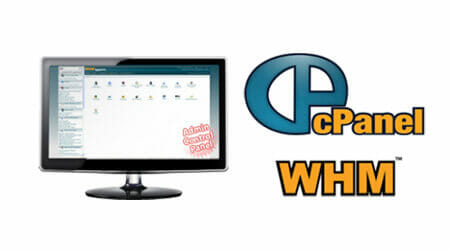A linux server is one of the best operating system for server purpose. It is secure, powerful, fast and free. But setting up the a Linux server is time consuming, you should have a proper technical skill in computer and networking technology. But you can skip all of that technical skill just by using a powerful tools called WHM/cPanel. WHM (WebHost Manager) or cPanel is a Unix based web hosting control panel that provides a graphical interface and automation tools designed to simplify the process of hosting a web site. All configurations are done by web user interface.
WHM/cPanel a 3 tier structure that provides functionality for administrators, resellers, and end-user website owners to control the various aspects of website and server administration through a standard web browser. And it supports CentOS, Ubuntu, Debian, Red Hat Linux, and FreeBSD.
It is very easy to setup a VPS with WHM/cPanel, for those who have less technical skill you can follow the standard step by step to make your server live and running.
WHM Initial Setup
To access your WHM, you need to type: https://YourIP:2087 in your web browser address bar, and it will ask you root login. Give username root and the password from your provider (it should be in your email). Then it would bring your to WHM initial setup which only take 6 steps:
- Agreement
Read it and if you agree, choose “I Agree/Go To Step 2.” - Setup Networking
Under the Contact Information heading (Fill all the required file mark with *):
In the Server Contact Email Address field: enter the email address at which you wish to be contacted if your server has a problemUnder the Hostname heading:
Enter your server’s hostname into the This Server’s Hostname field. Example: server1.yourdomain.comUnder the Resolvers heading:
In this enter your DNS server which provide by your service provider. See in your email, it usually provide there.Under the Main Network/Ethernet Device heading:
In the Select the main network/Ethernet device menu, select the device you would like to use for your connection . - Setup IP Addresses
In this page, you need to add at least 1 IP address as main IP address. If you purchase more than one IP address, then you can add it in this page. To add it:
a. Enter the new IP address(es) into the IP Address(es) to add field.
b. Click Add Ip(s).
Note: if you only have 1 ip address, then skip this step. - Setup Nameservers
Nameservers are responsible for spreading your server’s DNS information throughout the Internet. DNS allows visitors to access websites on your server. Usually it come like this: ns1.yourdomain.com, ns2.yourdomain.com. And this nameserver would be add to your name registrar, so when people type your website address, it will resolve to your server.To add nameserver domains:
- Enter the first nameserver into the Nameserver 1 field. Usually ns1.yourdomain.com.
- Enter the second nameserver into the Nameserver 2 field. Usually ns2.yourdomain.com.
- Add A entries:
a. Click the Add “A Entries” for all Nameservers checkbox.
b. Enter the IP addresses for each of your nameservers.
c. Click Add “A Entries” for Hostname if you would like to add an A entry for your server’s hostname.
d. If you clicked the Add “A Entries” for Hostname checkbox, enter the IP address for your server.
- Setup Services
In this page you can choose FTP server and Mail server program do you like. Just check the radio button to choose. Any FTP server and Mail server is good, ask your ISP administrator to know which one is better for you. - Set Up Quotas
In this page allow you to add account quotas package. There are many options to setup. Like quotas for disk size, bandwidth, ftp account, mail account, subdomain and many more. If you wish to sell hosting services then you need to setup your package here. If you are not, then skip this step. - Just press the finish setup and your server is ready to go.
Here is the basic setup of your server with WHM/CPanel installed. It is easy to use and reliable. There are couple things your need to setup after this, like update nameserver for your domain, create an account, and testing. I would publish it in next article. So stay tune. Thanks.

Thank youuu!!
Thank you so much for this great article!